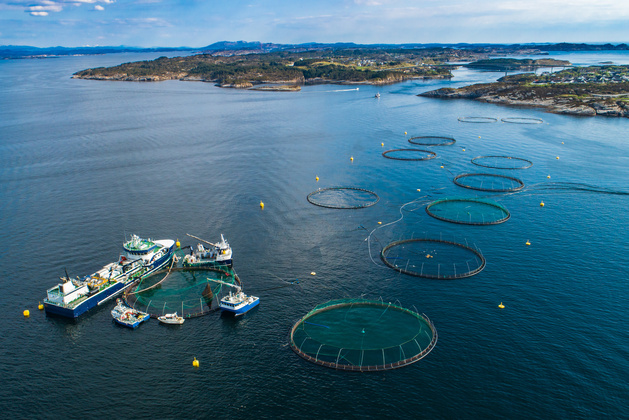Is Sea Slaughter the Future?

Today it's impossible according to Norwegian legislation, but could slaughter at sea become the future for the aquaculture industry?
Through the Strategic Institute Initiative (SIS) “Harvesting at Sea”, the goal is to increase knowledge among Nofima’s scientists and create interdisciplinary collaboration internally, thereby increasing knowledge that can be transferred to industry actors.
Only One Exemption
“The answer to the initial question is ‘yes’. But there’s a dynamic here. Slaughter and bleeding at sea will not replace land-based processing but become a supplement,” says senior scientist Bjørn Roth.
Currently, fish from Norwegian fish farms are mainly brought ashore for slaughter, and then transported by air or road to the markets.
Only one ship – Hav Line’s “Norwegian Gannet” – has an exemption from the Regulations on Quality of Fish and Fish Products, thus allowing it to bleed, slaughter and transport farmed fish to market in a single operation. “Norwegian Gannet” travels to a specially built receiving facility in Hirtshals, Denmark, with salmon and trout sourced from Norway and slaughtered on the boat.
“The processes that started with farmed salmon in pens are now spreading to fisheries. Electric stunning and bleeding aboard fishing vessels is becoming more common – both for quality and welfare considerations. We need to better understand how this works, as this is the future,” says Bjørn Tore Rotabakk.
Bleeding Boats
Bleeding boats are already well established in the aquaculture industry. However, in such vessels, only killing and bleeding out are performed, and the fish is transported to land-based facilities for further processing.
Approximately 50 percent of Norwegian fish farms use bleeding boats.
“Capacity and volume in the aquaculture industry are increasing, and land-based facilities can’t always keep up. But with more bleeding boats and the introduction of slaughter boats, capacity can be fine-tuned across the country,” says Bjørn Roth.
Colleague Rotabakk adds:
“Once the fish is killed, the boats can be smaller, because the fish can be transported at significantly higher density than if they were alive. The disadvantage of delivering fish that has been killed and bled on board is that it can go into rigor mortis – become stiff – before delivery.”
This raises the question: Is it possible to do the entire slaughter process at sea?
“The alternatives today are either to kill at the pen edge and then transport the fish to slaughterhouses and subsequently transport it further by road to the markets. Or pump the fish three times; aboard the well boat, then into holding pens and finally up to the factory for slaughter,” says Bjørn Tore Rotabakk.
“However, there’s also the perspective of mortality during transport for fish that are transported alive. This is a challenge that’s avoided with bleeding boats,” adds Bjørn Roth.
Hindered by Production Fish
The obstacle preventing anyone who wishes to slaughter at sea and set course directly for the markets is a 2019 amendment to the Regulations on Quality of Fish and Fish Products.
It states that so-called production fish, meaning salmon and trout with deformities, wounds or injuries, must legally be corrected in Norway before export. Therefore, all slaughter boats without exemption must stop at a Norwegian port to deliver production fish. This would have a major impact on profitability.
Despite this obstacle, researchers continue working to increase knowledge about the topic as much as possible.
“Through collaboration across the diversity of disciplines at Nofima, we will be able to document what’s possible to achieve with new methods, what it could mean for the industry, what savings and environmental effects could be achieved, and of course also what disadvantages sea slaughter would entail for Norwegian land-based facilities,” says Bjørn Tore Rotabakk.
Contact persons
Projects

